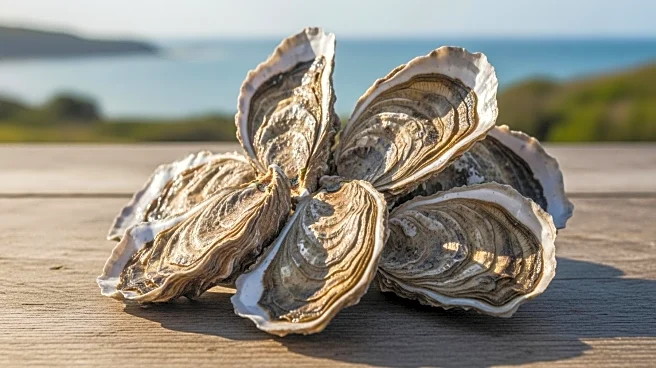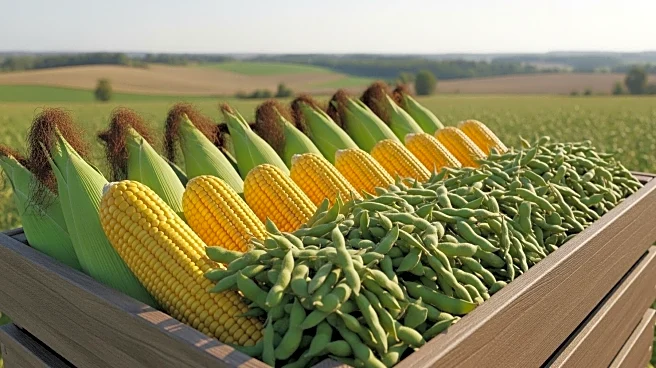What is the story about?
What's Happening?
The oyster farming market in North America is experiencing significant growth, driven by strong consumer demand for sustainable seafood. The United States is at the forefront of this regional market, investing heavily in modern aquaculture practices and receiving robust government support through subsidies and research initiatives. This support has enabled the U.S. to lead in the production of high-quality oysters, particularly Pacific Cupped and Eastern Oysters, which are in high demand both locally and for export. Canada also plays a significant role in the market, contributing to the production of these oysters. The growing health trends and consumer preferences for sustainable seafood continue to bolster the market in North America.
Why It's Important?
The expansion of oyster farming in North America is crucial for several reasons. Firstly, it supports the region's coastal economies by providing jobs and stimulating local businesses involved in aquaculture. Secondly, oyster farming is an environmentally sustainable practice that helps improve marine ecosystems through water filtration and habitat restoration. This aligns with global sustainable development goals and offers a viable solution to meet the increasing demand for protein and seafood products. The U.S. and Canada’s leadership in this market also sets a precedent for other regions to adopt sustainable aquaculture practices, potentially influencing global seafood production standards.
What's Next?
The oyster farming industry in North America is expected to continue growing, with further investments in technology and infrastructure likely to enhance production efficiency and sustainability. Government policies supporting aquaculture are anticipated to remain favorable, encouraging new entrants and the expansion of existing farms. As consumer demand for traceable and responsibly farmed seafood increases, the market may see more innovations in cultivation techniques and product offerings. Additionally, collaborations between technology providers and oyster farmers could lead to advancements in farming practices, further boosting the industry’s growth.
Beyond the Headlines
Oyster farming not only contributes to economic growth and environmental sustainability but also plays a role in cultural heritage, particularly in regions like the Chesapeake Bay. The practice of oyster farming has historical significance and continues to be a part of local traditions. Moreover, the industry’s focus on sustainability and traceability may influence consumer behavior, encouraging more environmentally conscious purchasing decisions. This shift could have broader implications for the seafood industry, promoting sustainable practices across various sectors.
AI Generated Content
Do you find this article useful?















